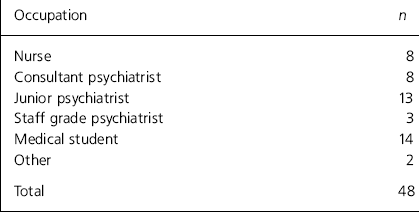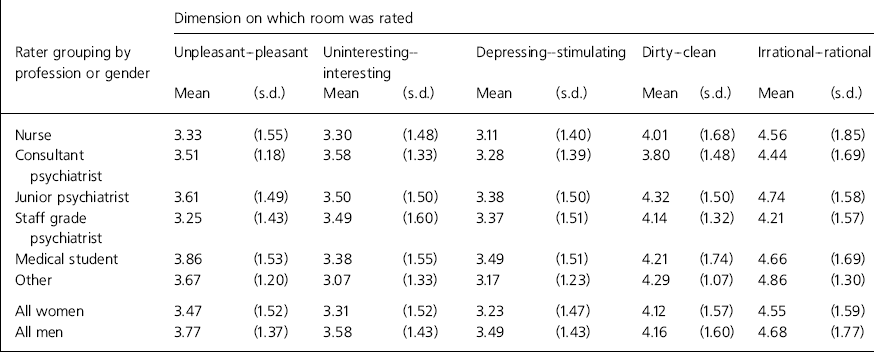From the mid-1960s a new field of psychological enquiry developed and it began to influence a number of other disciplines, particularly architecture (Reference ChaneyChaney, 1973). The contemporary field of environmental psychology now includes the study of the transactions and interrelationships between people and their socio-physical surroundings (including man-made and natural environments) and their relation to the other social, environmental and biological sciences. Information and methodology from this field are now used in a variety of areas including cognitive mapping, disaster planning, crime reduction, decision heuristics, risk management and many aspects of architectural and environmental design. Cognitive mapping is the process by which we acquire, encode, store, retrieve and decode information about our spatial surroundings. Heuristics (in this context) are the mental short-cuts we use to make decisions based on our past experience and are cognitively efficient, but can be sources of bias and error in our decision-making.
A topic of continuing interest within the discipline of environmental psychology is the concept of place; how places develop and acquire meaning for people and how they relate to people's plans of action, their preferences, their emotional reactions and, ultimately, their psychological well-being.
Concern about the deleterious effects of the hospital environment on psychiatric patients was expressed nearly 30 years ago by Goffman (Reference Goffman1961) and an awareness of the range effects of the environment on individuals with schizophrenia has been stressed by Gabb et al (Reference Gabb, Speichler and Lodyl1992). A recent survey of the quality of care in acute psychiatric wards has stressed the importance of a safe and pleasant environment (Sainsbury Centre for Mental Health, 1998). Not surprisingly, the architecture and environment of psychiatric hospitals has become the subject of significant study (Reference St CLAIRSt Clair, 1989; Reference GulakGulak, 1991). The primary objective of good psychiatric ward design is to create a comfortable and therapeutic setting that promotes both interest and activity (Reference RemenRemen, 1991). A variety of methodologies to assess in-patient environments have been used, including participant observation (Reference Christenfeld and HaveliwalaChristenfeld & Haveliwala, 1978), anthropological perspectives (Reference Devisch and VervaekDevisch & Vervaek, 1986) and the use of specifically developed standardised tools (Reference Jorda-MOSCARDO and IborraJorda-Moscardo & Iborra, 1991). Allowing psychiatric patients some control over their own environment is likely to produce positive effects (Reference LacyLacy, 1981) and colour has been shown to produce consistent changes in mood states (Reference Stone and EnglishStone & English, 1998). Concepts from environmental psychology have been usefully integrated into psychotherapeutic work (Reference Peled and SchwartzPeled & Schwartz, 1999). Specific environmental interventions involving décor and furnishings have been studied over a period of weeks by Baldwin (Reference Baldwin1985) and a period of months by Christenfeld et al (Reference Christenfeld, Wagner and Pastva1989) with favourable results, including reduction in in-patient violence and seclusion rates.
Important judgements about environments in which the psychiatric patients live and are treated are, therefore, routinely made by professional staff. There has, however, been little, if any, research into how the environmental perception of professional staff might vary. A pilot study was, therefore, undertaken to investigate the evidence of significant staff-dependent variables influencing professional perception of patients' personal environments.
Method
A valid and reliable instrument based on semantic differentials, the Environmental Rating Scale (ERS) (Reference PedersenPedersen, 1978), was selected and adapted for the purpose of assessing a small internal space. The original instrument contained 20 items — bipolar adjectives separated on seven-point scales. Five of the original items — unpleasant—pleasant, uninteresting—interesting, depressing—stimulating, dirty—clean and irrational—rational — were selected for their relevance to assessing the small internal space of a bedroom. Each bipolar adjective was scored from one to seven, seven being the most favourable score. It was hypothesised that those professionals who had had years of contact with psychiatric patients might rate their environments less negatively than those more recently exposed to them and that women might rate environments more negatively than men. Prospective approval for the study was obtained from the local research ethics committee. All the patients in a medium secure psychiatric unit in the South-West of England were interviewed in January 1999. They were given an outline of the study and asked for permission to photograph their rooms, being told a photograph would be taken at some time over the next few weeks. Twenty-one out of 24 patients gave their written consent for photographs to be taken and three declined to take part in the study.
Photographs (transparencies) were taken of the bedrooms on a single day approximately 2 weeks after permission was obtained, using a wide-angle lens. The patients were given no additional warning that a photograph was to be taken. A form was then developed for scoring, with the adapted version of the ERS to rate the slides. The slides were projected onto a screen while groups of health care professionals (raters) were instructed to complete the rating form. Sixty seconds was allowed per slide for the purpose of rating and no rater required additional time. No conferring between raters was permitted. In all there were 48 raters — 27 male and 21 female. Table 1 shows the representation of these rater groups, broken down by occupation.
Table 1. Breakdown by group

| Occupation | n |
|---|---|
| Nurse | 8 |
| Consultant psychiatrist | 8 |
| Junior psychiatrist | 13 |
| Staff grade psychiatrist | 3 |
| Medical student | 14 |
| Other | 2 |
| Total | 48 |
Data were analysed using Statistica 5.1 (Statsoft, 1997). Hypotheses that subjective ratings would vary according to profession or gender of the rater were examined using multiple univariate analyses of variance. The locations of significant differences were clarified where necessary using post hoc multiple comparisons (Tukey's honest significant difference test for unequal n; Reference Spjotvoll and StolineSpjotvoll and Stoline, 1973). The hypothesis that ratings would vary according to the age of the rater was examined by calculating separate correlations (Pearson's product moment) between ratings and age of rater for each of the dimensions along which ratings were made.
Results
Means and standard deviations of ratings made, broken down by professional group and gender, are presented in Table 2.
Table 2. Mean (s.d.) room ratings made on each of the five dimensions, broken down by profession and gender of rater

| Dimension on which room was rated | ||||||||||
|---|---|---|---|---|---|---|---|---|---|---|
| Rater grouping by profession or gender | Unpleasant-pleasant | Uninteresting-interesting | Depressing-stimulating | Dirty-clean | Irrational-rational | |||||
| Mean | (s.d.) | Mean | (s.d.) | Mean | (s.d.) | Mean | (s.d.) | Mean | (s.d.) | |
| Nurse | 3.33 | (1.55) | 3.30 | (1.48) | 3.11 | (1.40) | 4.01 | (1.68) | 4.56 | (1.85) |
| Consultant psychiatrist | 3.51 | (1.18) | 3.58 | (1.33) | 3.28 | (1.39) | 3.80 | (1.48) | 4.44 | (1.69) |
| Junior psychiatrist | 3.61 | (1.49) | 3.50 | (1.50) | 3.38 | (1.50) | 4.32 | (1.50) | 4.74 | (1.58) |
| Staff grade psychiatrist | 3.25 | (1.43) | 3.49 | (1.60) | 3.37 | (1.51) | 4.14 | (1.32) | 4.21 | (1.57) |
| Medical student | 3.86 | (1.53) | 3.38 | (1.55) | 3.49 | (1.51) | 4.21 | (1.74) | 4.66 | (1.69) |
| Other | 3.67 | (1.20) | 3.07 | (1.33) | 3.17 | (1.23) | 4.29 | (1.07) | 4.86 | (1.30) |
| All women | 3.47 | (1.52) | 3.31 | (1.52) | 3.23 | (1.47) | 4.12 | (1.57) | 4.55 | (1.59) |
| All men | 3.77 | (1.37) | 3.58 | (1.43) | 3.49 | (1.43) | 4.16 | (1.60) | 4.68 | (1.77) |
Profession of rater
Significant effects of rater profession were found on the unpleasant—pleasant dimension (F(5,1002)=3.89, P<0.01) and the dirty—clean dimension (F(5,1002)=2.71, P<0.05). Multiple comparisons to establish between which groups the differences lay revealed that the medical students rated rooms as being more pleasant than the nurses did, and the junior psychiatrists rated rooms as being cleaner than the consultant psychiatrists did.
Gender of rater
Significant effects of rater gender were found on the unpleasant—pleasant dimension (F(1,1006)=10.64, P<0.01), the uninteresting—interesting dimension (F(1,1006)=8.61, P<0.01) and the depressing—stimulating dimension (F(1,1006)=7.55, P<0.01). In terms of all three qualities, men rated the rooms more positively than the women did.
Age of rater
A significant relationship between the age of rater and the ratings made was found on the unpleasant—pleasant dimension (r=-0.083, P<0.01). In terms of this quality, increasing age of rater was associated with more negative ratings.
Discussion
The idea that there is a relationship between an individual's internal world and the external world they create has long been prevalent in psychiatry. This idea has been strengthened by concepts from child psychoanalysis (Reference WinnicottWinnicott, 1971). Dramatic and chaotic personal environments are seen with some types of psychiatric illness, especially the senile squalor syndrome (Reference Shaw and ShahShaw & Shah, 1996), but also with other psychiatric disorders including schizophrenia. Visits to the domestic environment of patients are part of good community psychiatric care (Reference Kates, Webb and LepageKates et al, 1991). Professional staff are routinely expected to assess both the appropriateness of particular living environments and how they might reflect an individual's mental state. A person's reaction to an environment is guided by his or her perception (Reference PedersenPedersen, 1978). Both cognitive and emotional dynamics shape an individual's response to a particular environment (Reference Ritterfeld and CupchikRitterfeld & Cupchik, 1996).
Although the hypothesis about gender differences was supported, the hypothesis regarding age was not. Women rated the environments significantly more negatively than men did on three out of five dimensions, but increasing age was significantly associated with more negative ratings on arguably the most subjective, unpleasant—pleasant.
Earlier studies have reported some gender differences in both creating (Reference PeichlPeichl, 1991) and rating environments (Reference Ritterfeld and CupchikRitterfeld & Cupchik, 1996). The age effect was unexpected. It was thought that longer professional exposure to institutional and disordered environments would make individuals more tolerant of these; however, the reverse was true. The reasons for the differences are unclear. It is possible that the actual process of cognitive mapping in relation to visual environments may be primarily influenced by gender, or the differences may be related to heuristic principles, or combinations of both. However, it is important to appreciate that there may be significant differences in how individual professionals assess the same environment. In our view, the assessment of the personal living environment can influence a variety of important decisions involving the management of psychiatric patients; from precipitating admission to hospital, to the assessment of progress through rehabilitation and to eventual discharge and monitoring in the community. Psychiatry may benefit from further examination of developments in the field of environmental psychology to aid the treatment and management of patients.
Acknowledgement
The cost of purchasing film and developing the slides was covered by a grant from Mr Tim Hoult of Zeneca Pharmaceuticals.





eLetters
No eLetters have been published for this article.